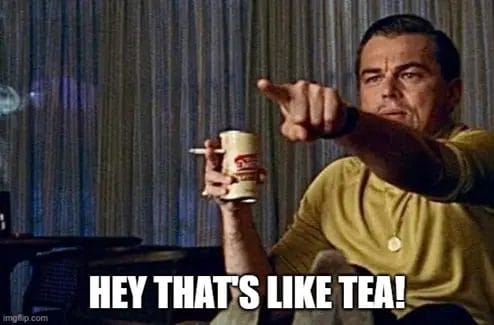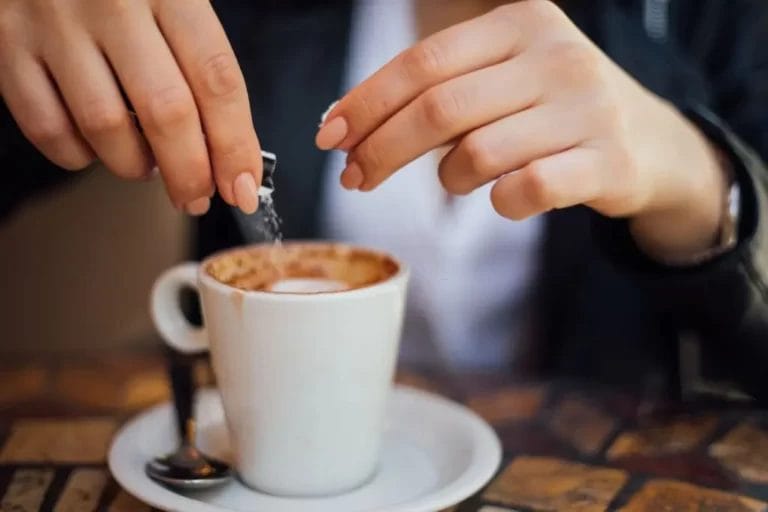Almost everyone loves sweet things, and of course, everyone loves coffee. Many coffee lovers enjoy their cup with added sweetness, aside from the natural sweetness of the coffee beans. But sometimes, you might want to avoid sugar because of the higher calorie count and for the sake of diversity. But what would you use to sweeten your coffee, if not sugar? Here you can learn how to sweeten coffee without sugar.
If the question is confusing you, allow us to point out the best alternatives for you. It’s more than just adding certain things to your coffee that aren’t sugar.
Natural Coffee Sweeteners
Natural sweeteners kill 3 birds with one stone.
- They don’t stress your blood glucose concentration
- They have possible health benefits
- You can experience a few unique flavor combinations.
But remember, not everything suits everyone, so make sure you do your homework before picking up one of these items from our list.
- Honey
- Stevia
- Maple syrup
- Agave syrup
- Beet sugar
- Date sugar
- Coconut sugar
Honey
Honey is collected and filtered from beehives. If the honey is not raw, it’ll go through a few processing steps that take away some natural benefits.
Honey is less glycemic than sugar, and raw honey has amino acids, enzymes, vitamins, and minerals. Sounds super healthy, right? But as we mentioned earlier, sometimes these elements can go away after processing, and many honey manufacturers cut corners and costs by adding sugar or corn syrup.

Though it’s healthier than sugar, honey has a higher calorie count of 21, whereas sugar has 16. The taste of honey depends on where the bees collected the nectar from. It can range from fruity, floral to spicy or nutty.
Stevia
Stevia is considered by many as an artificial sweetener since what you buy at the market is most probably the result of heavy lab processing and added artificial sweeteners.
But did you know you can also grow Stevia at your home? The exact name of the plant is Stevia rebaudiana. Grow Stevia, dry the leaves, crush them and use them as sweeteners for coffee.
Stevia is another magic plant-like coffee. On the glycemic index, Stevia has a Gl of 0, whereas white sugar has a Gl of 65. And yet, Stevia tastes at least 10 times sweeter than sugar. Even better? One teaspoon of Stevia has 0 calories.

Stevia can taste a lot like licorice with a bit of bitter aftertaste. If you are picking up packaged Stevia from the market, go for the liquid ones since they have fewer additives in them.
Maple syrup
Maple syrup is made from boiled Maple tree saps. Yep, your favorite go-to sweetener is tree sap juice. Natural maple syrup is less refined than the store-bought options, so watch out for the proper labels on the packaging.
Maple syrup’s Gl count is 54, and it has a few unique antioxidants, vitamins, and minerals in it that you can’t find in many other sweeteners. In addition, maple syrup doesn’t have fructose, but a couple of other sweeteners on the list do, such as honey, coconut sugar, and agave syrup.
Maple syrup’s calorie count is close to sugar, with 17 calories per teaspoon. The taste of maple syrup is a mix of vanilla and caramel, with a blend of nutty flavors.
Agave Syrup
Here’s a sweetener whose manufacturing process is similar to a daily consumed beverage.
Agave syrup is made from Blue Agave plant leaves. The leaves are taken out of the trees to extract the juices, filter them, heat them and concentrate them into a syrup. Sounds familiar?

Yes, it’s like tea, minus the syrup concentration method.
Agave syrup has a low Gl count of 15 while tasting 1.5 times sweeter than sugar. The calorie count loses to sugar, as agave has higher calories than sugar, 21.
Agave syrup’s flavor is described as “honey but more neutral.”
Beet Sugar
This sweetener comes from a root vegetable, and I hope it motivates you to eat your vegetables regularly.
Beet sugar comes from the beets of Sugar beet plants. The farmers slice the beets, heat and purify them, and then concentrate them into a syrup. The syrup has a crystallized form with a granulated texture when the process is complete.
Beet sugar is the closest alternative to sugar. However, the glycemic index count is really tight at 61, the calorie count is almost identical to 15 calories, and it tastes like white sugar.
Beet sugar and white sugar are so similar that around 55-60% of the sugar in the U.S. comes from sugar beets
Coconut Sugar
Another technical tree sap juice on this list, coconut sugar, comes from the coconut palm tree sap. Again, it’s boiled till the water evaporates and leaves behind consistent, granulated sugar.
Coconut sugar is highly beneficial to your health than white sugar while having half the glycemic index count of 35 and almost the same calories as sugar, with a count of 15.
Coconut sugar tastes similar to brown sugar.
Date Sugar/Syrup
This is a double-entry since both the sugar and the syrup come from dates.
The dates are dried till they are dehydrated and then ground into granules of sugar. And for the syrup, the dates are boiled in water. After producing boiled date juice, the juice is filtered and boiled again until it reaches a syrup’s consistency.
The glycemic index count of date sugars varies depending on the type of dates used for the process. But it still stays lower than white sugar by staying within the 44-55 limit.
Date sugars have a few beneficial components like potassium, B vitamins, iron, and fibers, but most of their losses during the boiling process.
While date sugar has a calorie count of 15 per teaspoon, the syrup is a little higher than sugar, with a count of 18. Both the sugar and the syrup taste similar to brown sugar, with a hint of butterscotch in them.
Mistakes can happen while you are preparing coffee for yourself.
To keep in mind, read out our coffee making mistakes to avoid article.
Sweeteners That Aren’t Sweet
“But how are they supposed to sweeten things if they aren’t sweet?” you might be thinking.
These ingredients provide a sweet flavor without high calorie and glycemic index count. This can be very helpful for diabetic coffee lovers.
- Coconut cream
- Butter
- Vanilla
- Cinnamon
- Cocoa powder
- Almond milk
Friendly reminder: a few items in this list are fats, so keep an eye on your consumption rate.
Coconut Cream
Coconut cream adds the flavor of coconut to your cup, making it nice and creamy.
Butter
You can add butter to your coffee and mix them in a blender to get a creamy coffee. It adds a bit of froth to your coffee and joy to your taste buds. Though butter and coconut cream both are oily, coconut cream oil is healthier.
Vanilla
If you add unsweetened vanilla extract to your coffee, you will feel like you have discovered the best additive in your life. Vanilla heightens the overall taste of the coffee cup it’s in.
Cinnamon
The spicy flavor of cinnamon amps up the taste of a coffee cup. It works best with medium roasted coffee. And the best part of it all? You only need a dash of cinnamon to transform a whole cup of coffee.
Cocoa Powder
Cocoa powder adds sweetness to your coffee and brings in chocolaty flavor as an added bonus. Only one teaspoon of pure unsweetened cocoa powder is enough to transform your cup into a chocolate-coffee hybrid.
Almond Milk
Almond milk may not be a big help in terms of sweetness, but unsweetened almond milk increases the natural sweetness of the cup with the hidden taste of vanilla in it. You can buy it from any store near you. Though the flavor needs a bit of getting-used-to, it’s a nice touch to your morning cup.
Artificial Coffee Sweeteners
I wouldn’t recommend these since we’re more lenient towards natural sweeteners. Overusing them can be a bad idea for your digestion system, and they can taste weird if not used right.

But since many coffee lovers like to use them anyway, I’ll put in the top 3 relatively safer options.
- Sucralose
- Saccharin
- Aspartame
Sucralose
Sucralose is created by chemically processing and altering white sugar. Chlorine atoms replace a few hydrogen-oxygen groups present in the sugar and produce sucralose in the process.
Sucralose has 0 Gl count in the glycemic index, 0 calories, and is still 400-700 times sweeter than sugar.
The lack of bitter aftertaste makes this artificial sweetener preferable to others.
Saccharin
This is a more complicated one. Saccharin is made out of chemicals named “o-toluene sulfonamide” and “phthalic anhydride.” These chemicals are put through the oxidation method to produce saccharin.
Like sucralose, saccharin also has a 0Gl count, 0 calories, and is 200-700 times sweeter than sugar. The only downside of saccharin is the bitter, metallic aftertaste.
Aspartame
Aspartame is produced from amino acids such as “Aspartic acid” and “phenylalanine” by chemically combining them both.
Aspartame is less of a “zero-calorie” sweetener and more of a “low-calorie sweetener.” Aspartame has a glycemic index count of 0 Gl, with 4 calories per gram.
Aspartame has no aftertaste, even when it’s 200 times sweeter than sugar.
Coffee Bean Selection
Now that we have discussed all the possible additives for sweetening your coffee, it’s time to look at how your coffee itself can affect the overall sweetness.
If you’re trying to ensure the best amount of sweetness right from the get-go, you need to make sure of these 3 things:
- You’re using Arabica coffee
- Your beans are at a medium roast
- You’re using medium grind for brewing
Arabica For Sweeter Coffee
Among the two main types of coffee available on the market, Arabica is the sweeter one, containing flavor notes of chocolate, caramel, nuts, and berries. So you can get a sweet aroma and flavor just by brewing the coffee itself.
The freshness of the coffee beans also makes a difference in how sweet the brew will be. So make sure you’re picking up freshly roasted beans and grinding them yourself.
Though it’s expensive and grinding is a long process, the final result is worth it. Because if your Arabica coffee is fresh enough and you make a good brew, you won’t even need to add anything for additional sweetness.
Medium Roast For Sweeter Coffee
A medium roast is the safest option to ensure a sweet cup of coffee and avoid bitterness.
Darker roasts can taste bitter and easily get over-extracted when you’re brewing the coffee. It gets even worse when the roaster doesn’t know what they’re doing and the dark roast into a burnt toast.

Though dark roasts can be enjoyable with maple syrup and other additives, a medium roast is the best option to choose if you are planning to achieve a sweeter brew.
Medium roast Arabica coffee beans have a broad taste profile that can add to the natural sweetness. Light roasts are also suitable for sweet brews, but light roasts shine better in iced coffee (pun intended).
Medium Grind the Best for Sweet Coffee
If the coffee grind is too fine, you risk over-extraction and bitter coffee. If it’s too coarse, you risk under extraction and a weak, watery drink that barely resembles coffee. That’s why medium grind gives you the highest chance to maintain the sweetness.
Another reason why medium grind is the best for sweeter coffee is that medium grinds are compatible with the most popular home brewing methods.
Drip and pour over to get you the best results with medium ground coffee. Though a popular homebrew method, the French press can’t give you the same sweetness you are looking for in your brew.
To enjoy a perfect cup of coffee, here you can read and learn from our how to do coffee cupping at home article.
How To Brew Sweeter Coffee
So we’ve talked about additives and coffee beans. The final hurdle is the brewing machine itself, which can make sure your coffee tastes sweet without any additives.
Certain brew styles extract the natural sweetness of the coffee beans finely while reducing the amount of bitterness that gets introduced into your cup. These are:
- Chemex Brew
- Cold-brew
- Espresso machine brew
Chemex Brew
The paper filters of the Chemex coffee maker ensure that the bitter-tasting coffee elements like oils, grounds, etc., stay out of your cup. The pour-over nature of this coffee maker also makes sure your coffee isn’t over-extracted, making it a perfect choice for brewing naturally sweet coffee.
Here are 4 pro tips for a sweet Chemex brew:
- Use a medium grind
- Let your boiled water sit for around 30-60 seconds before using it. Overheated water can cause bitterness.
- Use medium roast, fresh ground beans.
- Keep your Chemex brewer clean; a dirty coffee maker can add a bitter taste.
Cold Brew
A cold brew cup of coffee has a higher chance of becoming a sweet brew because of the lack of heat.
At a cooler temperature, only the sweeter compounds of the ground get released into the brew, while the bitter oils stay inside the bean. Therefore, slow brewing your cold brew at room temperature can get you the best results.
You don’t have to be worried about over-extraction with cold brew either, since you aren’t using hot water. Plus, it’s a summer refreshment! All the more reasons to get into it right away!
Here are 5 Tips for a sweet cold brew:
- Use coarsely ground fresh beans
- Use a light to medium roast
- Use a 1:4 coffee-to-water ratio
- Let the coffee steep for at least 12 hours in the fridge (24 hours maximum).
- Before drinking, dilute it 50/50 with water
Espresso Brew
Though espresso is known as that one strong, bitter coffee everyone loves, espresso is the best coffee machine you can think of when trying to bring out the best flavors out of the ground beans.
When you put Arabica beans through an espresso machine, the result is a coffee cup that has been introduced to all the sweetening elements present in the Arabica coffee beans. Add any form of the sweetener above for an added flavor punch, and you’re good to go.
Had fun reading our how to sweeten coffee without sugar article? Here is another suggestion for you. Read out our how to save money on coffee article.
Bottom Line
Sweetness is a personal preference. But, at the end of the day, it all comes down to what you like in your cup of coffee to make it sweeter and satisfy your sweet tooth.
Hope our suggestions of sugar alternatives help you fine-tune your desired sweet coffee while keeping your blood sugar levels in check. Cheers!
FAQs
Though it depends on the coffee, I mostly use either honey or maple syrup for my coffee.
Any form of natural sweetener or store-bought chemical sweeteners can enhance the sweetness of your cup.
My personal choice would be coconut sugar since coconut gives you a wide array of health benefits.
Arabica beans contain more fruity and sweeter flavors. If you are going for a sweeter cup of coffee, Arabica should be your first choice.
Coffee sweetened with natural sweeteners are healthier, plus they help us keep our calorie and glucose consumption to a safe limit without compromising the taste of the final cup.

